
The Business of Fashion
Agenda-setting intelligence, analysis and advice for the global fashion community.

Agenda-setting intelligence, analysis and advice for the global fashion community.
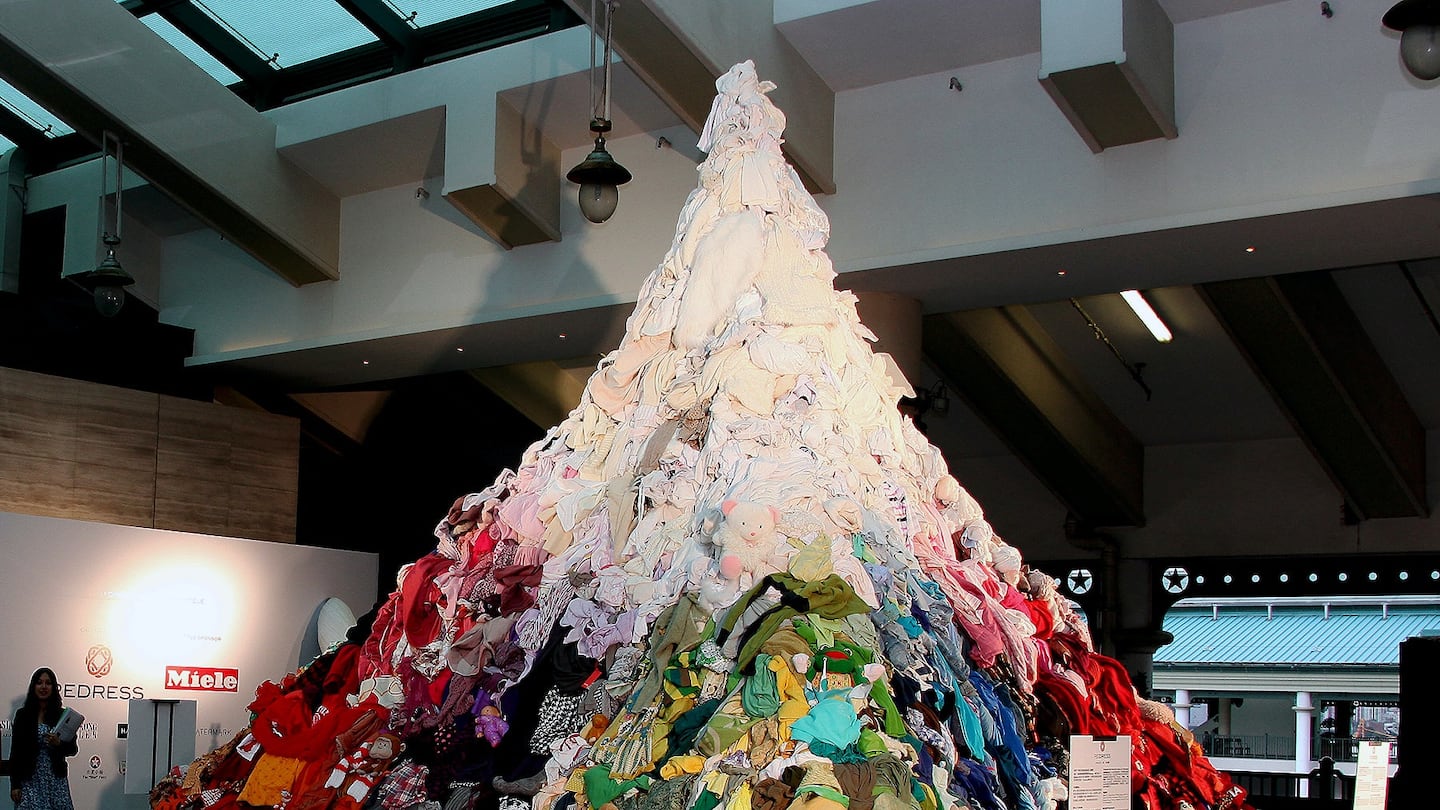
China’s meteoric rise to the top of the world’s fashion and luxury consumer market has been well documented, but the evolution of hundreds of millions of Chinese people into middle class consumers also comes with consequences — not least for the environment.
According to the most recent available estimates from the Ellen MacArthur Foundation, China currently produces more than 20 million tonnes of fashion-related waste products each year, a combination of production waste and “post-consumer waste”, or old clothes its consumers no longer wear.
The good news is that China’s proportion of the former is getting smaller. The bad news is that the apparent shrinkage is partly due to a shift in garment and textile manufacturing away from China to other markets with lower labour costs. This means that overall waste might not actually be lessened, just China’s share of it, because the problem is likely to simply shift to other countries that feed global demand.
What’s arguably more worrying is that the proportion of China’s post-consumer waste is growing as the country’s appetite for fashion grows. According to Statista data, revenue in China’s apparel market will reach $321.28 billion in 2021 and is expected to grow annually by 8.24 percent through 2025. The volume of apparel consumed is also expected to continue growing over this period, with an expected 31.32 billion pieces sold annually by 2025.
ADVERTISEMENT
China’s ability to confront this problem is complicated by a tangled web of challenges.
“There are many issues,” explained Kowen Tam, a manager at Yagi & Co, a company that has traditionally recycled manufacturing textile waste into garment products for companies including Adidas, H&M and Decathlon.
“There are legal issues; there are technical issues, there are consumer behaviour issues in China,” he said, adding that Chinese consumers “just really don’t want to buy second-hand clothes” all that much yet.
Indeed, the market’s strong consumer preference for newness outweighs the momentum of China’s nascent sustainability movement and challenges in the recycling process of most apparel products remain an obstacle.
China has the opportunity to be circular ahead of everybody else.
Yet some remain optimistic that the country can get a handle on its annual mountain of textile waste and that its next moves will make a huge difference in how much global fashion companies embrace circularity within their own supply chains.
Factors in China’s Favour
According to Edwin Keh, chief executive of the Hong Kong Research Institute of Textiles and Apparel (HKRITA), China’s existing manufacturing base, much of it in need of repurposing following mass market production’s offshoring move, gives the country a distinct advantage.
“China has the opportunity to be circular ahead of everybody else,” Keh said.
ADVERTISEMENT
“The challenge for the traditional western world is that they have no manufacturing capabilities left, so even if they recycle everything, they still have to work out how to process and manufacture that back into a useful product. China should not have that problem, [because] China already knows how to make a lot of stuff,” he explained.
Ma Yun, founder of Shanghai-based collection and recycling firm, Fei Mayi (the name translates to “flying ant” in English) points to huge strides in the amount of textile materials and used clothing coming into recycling channels like theirs since it was founded in 2014.
Whereas government statistics referenced by official news agency Xinhua in 2016 put the total amount of textile waste China reused or recycled at around 1 percent, with 99 percent ending up in landfill or incinerated, Ma now estimates that around 15 percent of the total is reused or recycled.
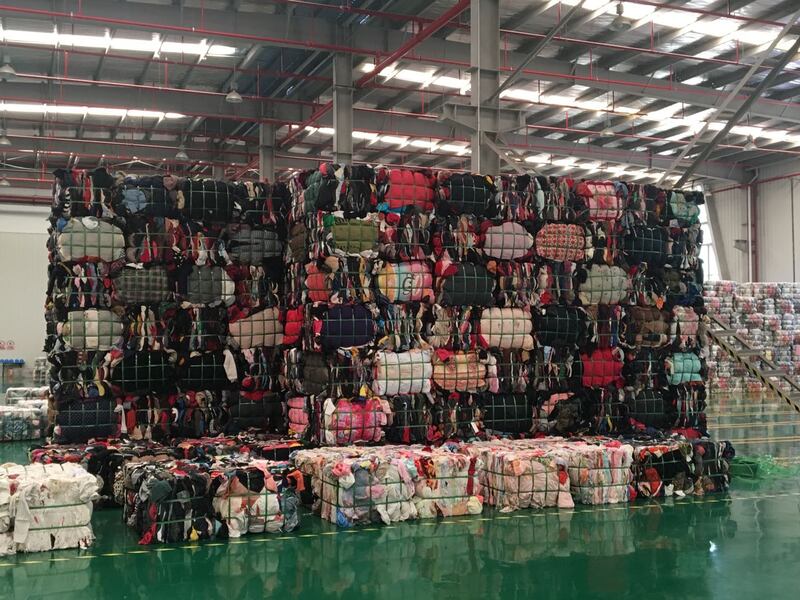
Figures from an Ellen MacArthur Foundation report released last year, “Outlook for a New Textile Economy in China”, estimated that China produced about 21 million tonnes of textile waste in 2018, of which about 5 percent was reused through donation and export, and about 17 percent was recycled as materials. The “comprehensively utilised volume” was 4.8 million tonnes.
“Before, just one out of one thousand, or several out of one thousand pieces of clothes entered the recycling channel,” Ma said, adding his prediction that within five years, that percentage will rise to between 30 and 40 percent.
Consumer awareness about recycling has increased significantly in cities like Shanghai, where an aggressive and mandatory garbage-sorting programme was implemented in 2019.
These days, Ma said, with similar programmes being rolled out across the country, it would be impossible for people not to be aware that recycling their old clothes, rather than throwing them in the garbage, is an option.
This being said, even though Ma says the cost of collection is one of the biggest challenges facing the profitability of his business and those like it, the hardest part of China’s textile waste equation comes next.
ADVERTISEMENT
Mixed Regulatory Picture
As a planned economy led by a central authoritarian government, China has notable advantages when it wants to get big things done.
Yet, even as China has explicitly taken aim at promoting a circular economy and tackling textile waste by encouraging recycling in policies, including in the 12th and 13th Five-Year Plans passed by the country’s top lawmakers, legislation lingering on the country’s books from 2009 makes it illegal to domestically sell items made from recycled fibres that “directly touch the skin”.
Kowen Tam says that this law stops global fashion companies from choosing recycled materials for core lines, because they can’t be sold in China.
As long as this law exists, it will definitely slow down the Chinese recycling industry.
“As long as this law exists, it will definitely slow down the Chinese recycling industry because it’s stopping all kinds of mechanical recycling, whether it’s up to standard or not,” he explained, adding that a new standard for recycled materials is currently making its way through China’s byzantine legal system.
Tam hopes a national standard can be implemented by the end of 2021, solidifying the legal status of recycled garments in the market, but even if that goes to plan, there are universal technical problems inherent in recycling textiles to contend with.
‘An Engineering Challenge’
Tam, whose company is exploring ways to apply its pre-consumer waste recycling technology to post-consumer waste, says that for every 100 tonnes of used garments it purchases, only 10 to 15 percent will be garments that are 100 percent cotton or polyester (which can be more easily reused and recycled for higher quality products).
The rest is comprised of blended fabrics which, with the recycling technology commercially available today, can in general only be “down-cycled” to make insulation and building materials, for example, which means “the value of doing this kind of recycling is low”, Tam says.
Currently, many of the remaining non-recycled garments are collected and exported by China (and other developed consumer markets like Japan, the US and South Korea) to the developing world in Africa, Southeast Asia and South America.
“This is a way of exporting and postponing this waste issue because … 80 percent is [poly-cotton blends, such as] TC [tetoron cotton, which is 65 percent polyester and 35 percent cotton] or CVC [chief value cotton, 60 percent cotton and 40 percent polyester] and when we pass this to African countries it will forever live in African soil,” Tam said.
Though exporting used garments to Africa and Southeast Asia is the most profitable component of Ma Yun’s business, he also acknowledges that exporting the problem isn’t a long-term solution.
“Africa’s economy will also rise and … in the future, there will be no countries, even in Africa, that need these clothes,” he said.
Unless the global apparel industry reconsiders its use of blended fibres in the majority of garments — which at present seems highly unlikely given the implications on cost and material performance — the only hope is a technical solution that can separate these fibres and recycle them.
HKRITA’s hydrothermal separation and reprocessing system is one of the most developed examples of this kind of technology in the world, with an industrial scale system being built that will be able to recycle two tonnes per day, and the possibility of scaling that up to as much as 50 tonnes per day, according to its CEO’s estimates.
“In China, we are looking at needing 1,000 or 2,000 tonnes capacity [per day], so that’s an engineering challenge,” Keh said. “I think a lot of the fundamental work has been done, but the types of solutions fit for purpose in China will be at a different level.”
He remains hopeful that those solutions are on the horizon, but also that a new generation of Chinese consumers will be able to make a significant dent in the country’s textile waste problem by shifting their behaviour to make more sustainable choices and becoming more broadly accepting of reused and recycled fashion products.
“The problem will be if this generation consumes like their western counterparts. [If that happens] there’s not enough steel, cement or apparel in the world to satisfy their desires,” Keh warned.
时尚与美容
FASHION & BEAUTY

Valentino Taps New Greater China CEO
The Italian luxury house has named Mitchell Bacha its chief executive officer for Greater China. Bacha will be in charge of Valentino’s retail channel and online business, as well as continuing to raise the brand’s profile and strengthen its e-commerce presence in China. Valentino, along with many other European luxury brands, has focused on providing immersive brand experiences within the Chinese market since the pandemic, as the Chinese shoppers they would normally serve overseas stay home to shop. In December 2020, the brand launched a major exhibition at Shanghai’s Power Station of Art it called “Resignify”. (BoF)
Jackson Yee Gets a Promotion From Tiffany & Co.
Yi Yangqianxi, also known by the English name, Jackson Yee, has proven such a hit as Tiffany & Co.’s regional ambassador in China since his appointment last June, that he has now been promoted to a global ambassador role, according to an announcement on the jeweller’s official Weibo account. Just a week ago, the young star, best known as a member of boy band TF Boys, was also appointed global make-up and skincare ambassador for Armani Beauty. The appointment of Asian stars generally and Chinese celebs in particular to be the global faces of brands - most prominently in the luxury and beauty sectors - has grown in popularity this year, as more and more international brands turn to Asia for sales growth. (BoF)
Live Shows, More Buyers at Shanghai Fashion Week
Shanghai’s busy calendar of fashion week events came to a close last night, after eight days featuring more than 100 live shows, livestreamed consumer-facing sales events, showrooms and trade shows. According to figures from the official Mode Shanghai trade show, the number of buyers at this edition, versus last October’s edition, rose 153 percent. In the tents at Xintiandi’s Taiping Park, established Chinese brands, including Comme Moi, Leaf Xia, Yes by Yesir and Dawei, staged runway shows, while the Labelhood platform for independent designer showcases ran concurrently at the Tank Museum in Shanghai’s arts and cultural West Bund hub with featured designers including Angel Chen, Shushu/Tong, Private Policy and Oude Waag. (BoF)
科技与创新
TECH & INNOVATION
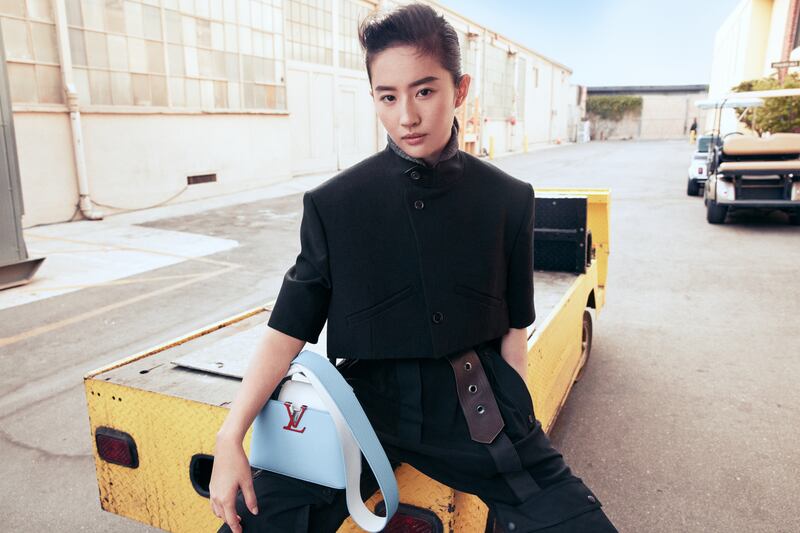
Louis Vuitton Partners with JD.com to Expand E-Commerce in China
French luxury giant Louis Vuitton has partnered with JD.com to further its e-commerce reach in the China market, but will not sell its products via JD.com’s platform. It seems JD.com, in order to compete with Alibaba-owned Tmall’s dominant Luxury Pavilion, is getting creative in its efforts to attract luxury partners and has worked out a model in which customers that type “LV” into the JD app search bar are redirected to Louis Vuitton’s official WeChat mini-programme where a full range of the brand’s products are available to purchase. Though Louis Vuitton has had its own e-commerce store in China since 2017, it’s one of the last major luxury brands to remain outside of China’s dominant platform system. This partnership allows Louis Vuitton to access the traffic of JD.com’s 472 million active annual customers, and simultaneously retain control of the shopping experience through its own mini-programme. (BoF)
Chinese Tech Firms Warned by Regulators
Representatives from 34 of China’s most prominent tech companies, including e-commerce giants JD.com, Pinduoduo and Vipshop , short-video platform leaders Bytedance and Kuaishou, as well as WeChat-owner, Tencent were summoned to a meeting with the State Administration for Market Regulation (SAMR), according to a statement on its website. This meeting came hot on the heels of a record $2.8 billion dollar fine levied against Alibaba for anti-trust violations and in the midst of a multi-pronged clean-up effort Chinese authorities are waging on tech firms, which have operated with relative freedom to innovate and grow to this point. According to the SAMR’s statement, companies at the meeting were told to comprehensively self-assess their businesses, rectify any issues and pledge to comply with China’s laws and regulations. Those that don’t comply within one month will face “severe punishment”. (BoF)
消费与零售
CONSUMER & RETAIL
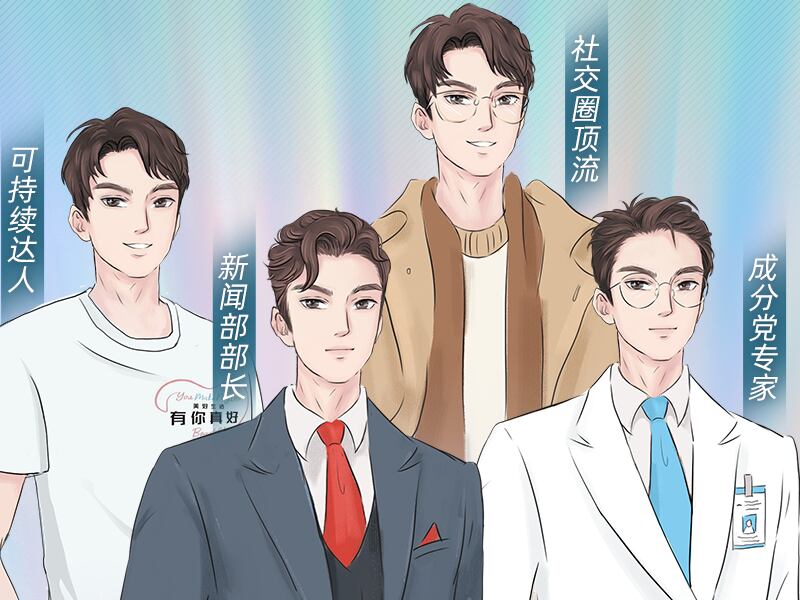
L’Oréal Revenue Recovers Thanks to Help From Chinese Consumers
L’Oréal reported a stronger than expected 10.2 percent rise in comparable first-quarter sales from a year earlier, helped by strong growth in China. The French group had begun to recover already from the worst of the Covid-19 pandemic’s hit to revenues, as retailers re-opened in much of Asia. The pace of sales growth in the first three months of 2021 picked up further from the 4.8 percent rise notched up in the fourth quarter. (Reuters)
Chinese Retail Giant Metersbonwe’s 2020 Revenue Drops 30%
According to Metersbonwe’s annual report, its 2020 revenue fell 30.1 percent to 3.82 billion yuan ($584.89 million) last year, while net profit fell 3.5 percent to a loss of 854 million yuan ($130.79 million). The company says the decline was mainly due to the impact of the pandemic on its operations, which remain largely reliant on its physical retail network, in spite of the closure of thousands of stores in recent years as the brand has struggled to keep pace with newer, more digitally-native competitors. Metersbonwe also increased the liquidity of its inventory in 2020, leading to an impact on the gross profit margin of sales and last month announced it was selling assets worth 448 million yuan ($68.84 million) to help stem its losses. (BoF)
Ellassay Sees Q1 Recovery Following a 25% 2020 Revenue Drop
Ellassay Group — the Chinese womenswear giant that includes its own Ellassay brand, as well as Laurèl and IRO Paris, Self Portrait’s mainland China business and Ed Hardy in Greater China — saw overall revenue drop 24.9 percent to 1.96 billion yuan ($301 million) last year, according to its annual report. The company also released financial data for the first quarter of this year, in which revenue reached 536 million yuan ($82.34 million), up 30.61 percent over the same period last year. Last year, the Ellassay brand suffered a 10.41 percent year-on-year decline in combined revenue, attributed to poor distributor performance, but grew 51 percent in the first quarter, year-on-year. (BoF)
政治,经济与社会
POLITICS, ECONOMY, SOCIETY
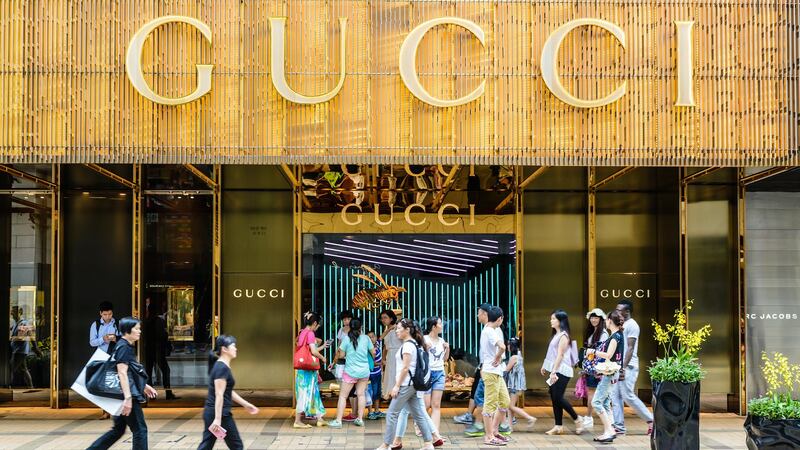
China’s GDP Grows 18.3% in Q1, March Retail Sales Up 34.2%
As expected, China’s economy surged 18.3 percent in the first quarter of 2021, versus a year ago, when the country was largely shut down for a significant period to manage the spread of its worst Covid-19 outbreak, according to data released by the country’s National Bureau of Statistics. This represents a 0.6 percent slowdown compared with the fourth quarter of 2020. China’s first quarter is traditionally a time of lower economic production, due to an extended break for Chinese New Year, which this year fell in February. Retail sales grew by 34.2 percent in March, year-on-year. This represents a slight improvement from the 33.8 percent increase for January and February. (BoF)
Better Cotton Initiative Statement on Xinjiang Disappears from Website
A statement the Better Cotton Initiative (BCI) has had on its website since October 2020, announcing it was enacting a policy of “responsible disengagement” and would cease sourcing from China’s Xinjiang region amid reports of forced labour, has disappeared from its site. The statement, and others related to it published by international fashion brands, has been the source of fierce backlash in China since late March, with widespread calls on Chinese social media to boycott brands, including H&M, Nike and Burberry, that have taken a stance against sourcing cotton from Xinjiang. When reached for comment by BoF, a spokesperson for BCI said: “We will be communicating on this topic as soon as we are in a position to do so.” (BoF)
China Decoded wants to hear from you. Send tips, suggestions, complaints and compliments to our Shanghai-based Asia Correspondent casey.hall@businessoffashion.com.
With consumers tightening their belts in China, the battle between global fast fashion brands and local high street giants has intensified.
Investors are bracing for a steep slowdown in luxury sales when luxury companies report their first quarter results, reflecting lacklustre Chinese demand.
The French beauty giant’s two latest deals are part of a wider M&A push by global players to capture a larger slice of the China market, targeting buzzy high-end brands that offer products with distinctive Chinese elements.
Post-Covid spend by US tourists in Europe has surged past 2019 levels. Chinese travellers, by contrast, have largely favoured domestic and regional destinations like Hong Kong, Singapore and Japan.